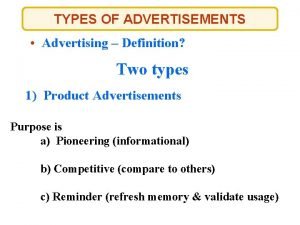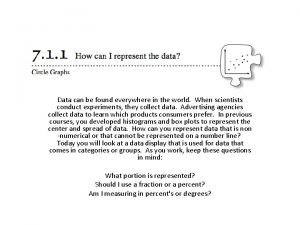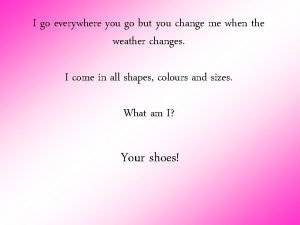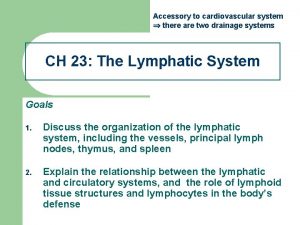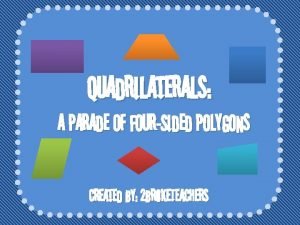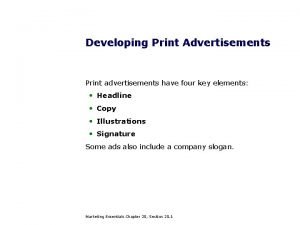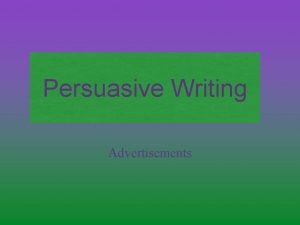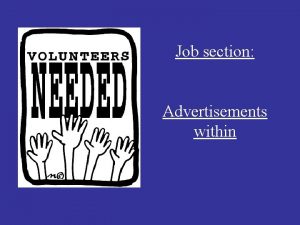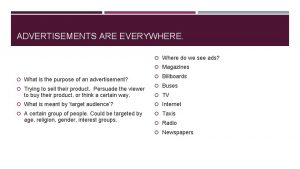Advertisements n Advertisements are everywhere n n n

















- Slides: 17

Advertisements

n Advertisements are everywhere n n n TV, magazines, radio, internet, shop windows, sides of buses, billboards, cars Advertising is increasingly regarded as normal; a natural part of life. Advertising has become artful and sophisticated.

Forms of advertising n Print advertising n n Where do we see print advertisements? Film advertising n Where do we see film advertisements?

Context Drives the Purpose n n n Companies have a new product to sell A new service is available There is an issue in the community which needs to be addressed The need to be elected (eg. Political campaigns) What else?

The purposes of advertising: n n Sell a product Encourage people to support a cause Change people’s behaviour Affect people’s attitudes on a particular issue.


Target Audience n All advertisements have a target audience. A specific audience may be; Age n Gender n Occupation n Nationality n Ethnic group n Sub-culture ( surfies, hippies, gangsters) n

Audience Response n How the audience responds to the advertisement is important. n n Why do you think that is? Consider the AIDA theory: How is ATTENTION captured? n How is INTEREST maintained? n How is DESIRE created within the audience? n What forces the audience to take ACTION? n

Techniques used to focus your attention n n Framing- affects what it is in the advertisement and what is left out Focus- Some parts of the background are blurred to give the parts that are in focus more power and distinction Composition- how contents of an image are placed in relation to each other. Leading Lines- The eye follows and moves along straight lines

Media Codes and Conventions n n n See the media codes and conventions hand out which outlines the SWAT codes: n SYMBOLIC codes n WRITTEN codes n AUDIO codes (obviously not relevant to print advertisements) n TECHNICAL codes Consider how these codes and conventions apply to the AIDA theory Don’t forget the layout of the advertisement. Two major layouts include: n Z-Layout n Grid Lauout

The process of transference n This is when a ordinary looking object is placed in an exotic setting. To the audience, some of the exoticism of the setting is transferred onto the object. This is because objects have particular connotations.

n n Connotations: the associated thoughts that any particular sign brings to mind. These might be anything connected, suggested or implied by the sign. Eg. White dove = peace Denotations: the naming and describing level of a sign. This level defines/denotes what the sign refers to. Eg. Dove = small bird


Celebrities n The celebrity chosen by an advertiser will depend on the type of image they are trying to create for the product and the target audience.


Language of Advertisements n Extensive use of adverbs and adjectives Delicious n Advanced n Healthier n Reliable n Glamorous n n Extensive use of superlatives n Eg. Best, fastest, greatest, most wonderful.

 Antigentest åre
Antigentest åre Logos everywhere
Logos everywhere Advertising definition
Advertising definition Data can be found
Data can be found Apples here apples there
Apples here apples there Don't leave home without it slogan
Don't leave home without it slogan Everywhere in spanish
Everywhere in spanish Great tao
Great tao I go everywhere you go
I go everywhere you go How can brahman be everywhere and in everything
How can brahman be everywhere and in everything Clil water
Clil water Houses of prayer everywhere
Houses of prayer everywhere Sit everywhere
Sit everywhere Presentation about love and friendship
Presentation about love and friendship Lymphatic vessels are located everywhere except the
Lymphatic vessels are located everywhere except the Four sided shapes
Four sided shapes What are element of poetry
What are element of poetry Poll everywhere register
Poll everywhere register


